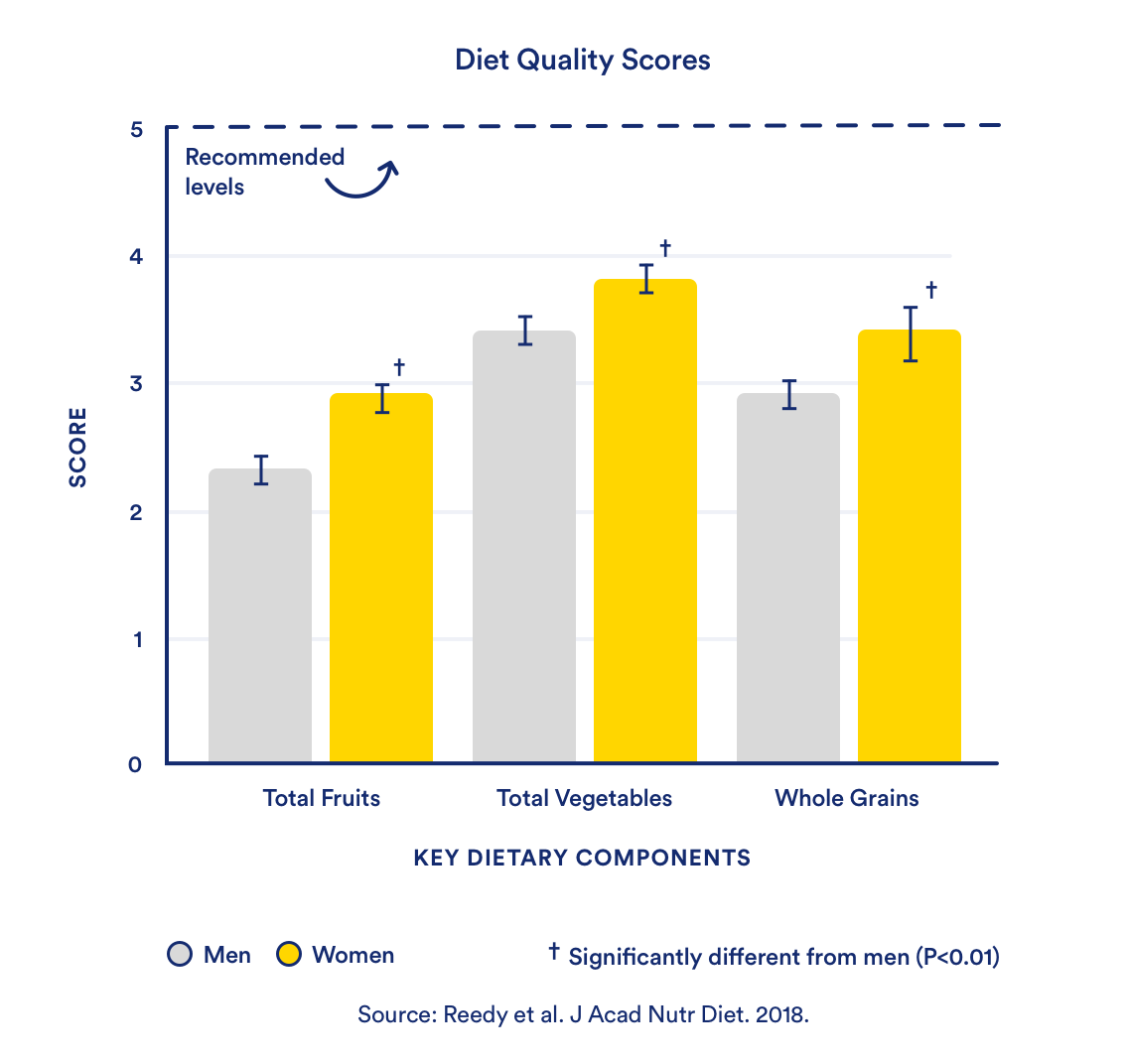4. Some men tend to prioritize exercise over diet.
→ Level Up: Both diet and exercise are crucial components in a healthy lifestyle—so don’t over-prioritize one at the expense of the other!
Don’t get us wrong: When it comes to a balanced, healthy lifestyle, regular exercise is essential. In fact, according to recent data, men are working out more than ever, which is great!
But in a Ritual survey, men also ranked exercise twice as important as diet—when in reality, both are equally important. Think about it this way: Working our muscles by way of a workout regimen is just one part of the equation. Muscle synthesis wouldn’t happen without the help of macronutrients (protein, fat, carbs) and micronutrients (folate, for example) that we get through our diets. In other words, it’s time for a shift in priorities.* (5,6)
5. A lot of men might not see the value in multivitamins.
→ Level Up: Choose a multivitamin made for skeptics, by skeptics.* (We got you.)
According to a recent survey, only about 61 percent of “healthy-ish” men see multivitamins as a valuable addition to their daily routines. To be clear, it's true that when it comes to meeting our nutrient needs, diet should be our #1 priority, and that means making every effort to fill our plates with balanced, nutrient-rich foods. But when factors like genetic variations, dietary restrictions, and lifestyle preferences come into play, we can still be vulnerable to gaps—which is where a quality multivitamin can come in handy.* (7)
If you're among the healthy-identifying men who don't necessarily believe in vitamins, you’ve come to the right place: 68% of our current customers never stuck with multivitamins in the past, and even our founder and CEO was a lifelong vitamin skeptic before starting Ritual. It’s why we take a different approach to formulation, poring over the latest nutritional data to identify nutrients that are really lagging from our diets—depending on age, sex, dietary preferences, and current lifestage. We focus on helping fill dietary gaps, rather than adding extra nutrients you’re probably getting enough of (like vitamin C, for example) from your food. We’re mindful of vegan and vegetarian diets, as well as allergies and genetic considerations. And we skip the shady extras, like mystery additives and colorants.*
The bottom line? Leveling up your nutrition habits doesn’t have to be complicated—it’s all about reprioritizing what’s on your plate, and maybe taking a multivitamin to help fill gaps.*
References:
- Reedy J, Lerman JL, Krebs-Smith SM, et al. Evaluation of the Healthy Eating Index-2015. J Acad Nutr Diet. 2018;118(9):1622‐1633.
- Lee-Kwan SH, Moore LV, Blanck HM, Harris DM, Galuska D. Disparities in State-Specific Adult Fruit and Vegetable Consumption — United States, 2015. MMWR Morb Mortal Wkly Rep 2017;66:1241–1247.
- USDA, Agricultural Research Service, 2019. Usual Nutrient Intake from Food and Beverages, by Gender and Age, What We Eat in America, NHANES 2013-2016
- Tang, Guangwen. “Bioconversion of Dietary Provitamin A Carotenoids to Vitamin A in Humans.” The American Journal of Clinical Nutrition, vol. 91, no. 5, Mar. 2010, doi:10.3945/ajcn.2010.28674g.
- NCHS National Health Interview Survey 2008-2018.
- Ritual - Men’s Health Survey. November 2019. n=300.
- Marketing Health to Men - US - 2015 (Mintel) N963








